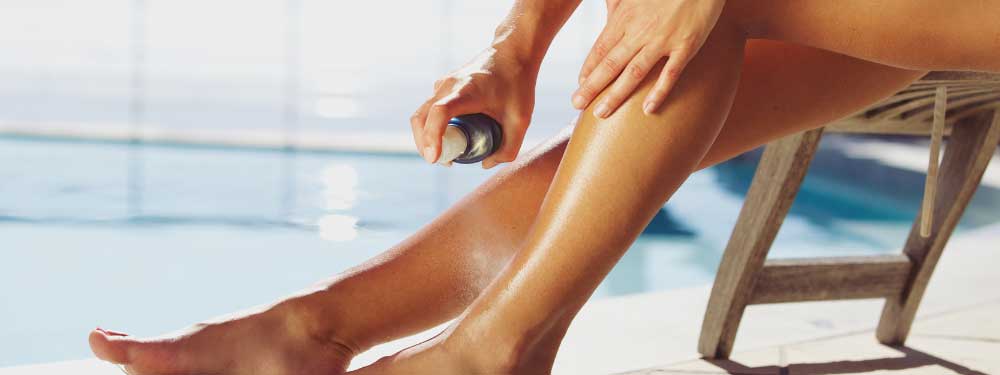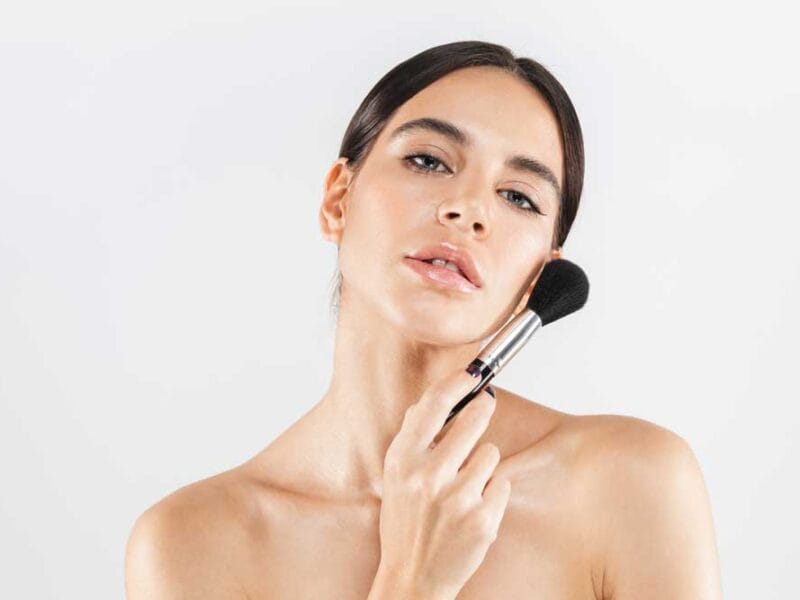Makeup-and-skincare hybrids are trending in a big way. But, convenient as SPF makeup may be, you shouldn’t be relying on it as your sole means of sun protection.
The problem is this: The amount of SPF makeup or moisturizer that you would need to achieve sufficient protection from UVA and UVB rays is probably much more than you’d normally apply.

In other words, it isn’t that SPF makeup is less effective than sunscreen. In fact, SPF makeup can contain the same active ingredients in the same (or very similar) proportions as some sunscreens.
The issue, according to Michelle Wong, a chemist and the author of the book The Science of Beauty, is that you’d have to apply 2 milligrams of any SPF product to every square centimeter of your skin to reach the level of protection promoted on the packaging.
You’d need the same amount of sunscreen too. The critical difference, of course, is that sunscreens are formulated to disappear into the skin, whereas makeup is designed to sit on the skin and deliver more pigment the more you apply.
Wong demonstrated this in a video she shared on her Instagram channel, labmuffinbeautyscience. She determined that she would need 0.76 gram of SPF foundation to achieve the level of protection promised on the foundation’s packaging. That worked out to 13 pumps of foundation. She uses only about one and a half pumps normally.
Instead, if you administer a full application of your preferred face sunscreen and allow it to fully set, then apply any foundation, powder, etc., you’ll likely get a cumulative boost of protection. Exactly how much is difficult to quantify, but it’s likely to be very small, Wong says. Still, it’s your best sun-protection strategy.
What about mixing sunscreen with foundation?
Mixing sunscreen in your regular foundation before applying it seems like it could be a convenient alternative. However, doing so is likely to reduce your overall level of sun protection.
Wong admits there’s not a lot of data on such scenarios. But, she says, it’s pretty safe to assume you’ll end up with some gaps in your coverage, “based on what we know about formulations.”
In this vein, give your sunscreen a full 15 minutes to set before doing your makeup. Less than that, you may disrupt the sunscreen’s molecular chains and compromise its ability to protect you.

How should I reapply sunscreen over makeup?
This is the $10,000 question.
The trickiest part of all this comes two hours after you’ve put on your sunscreen and makeup, when it’s time to reapply your sunscreen.
Unfortunately, as far as we can see, there are no foolproof hacks to get through this dilemma.
Wong advises against using sunscreen sticks or clear sunscreen sprays that can be applied on top of makeup because you’d end up applying either too little to be effective or so much that it would ruin your look.
Instead, she suggests assessing, beforehand, how much sun exposure you’ll likely get based on what you’ll be doing. Then, either reduce the amount of makeup you wear to make the sunscreen and makeup reapplication process easier, or add more layers of sun protection, such as a hat.
When Wong does reapply sunscreen over makeup, she uses a cushion puff to dab it all over her face, rather than smearing it in with her fingers.
Try some different combinations and reapplication techniques. It’s going to take some trial and error to figure out what works best for you. Hang in there. You’ll find it.



 ‘Unscented’ and ‘Fragrance-Free’ Do Not Mean the Same Thing
‘Unscented’ and ‘Fragrance-Free’ Do Not Mean the Same Thing